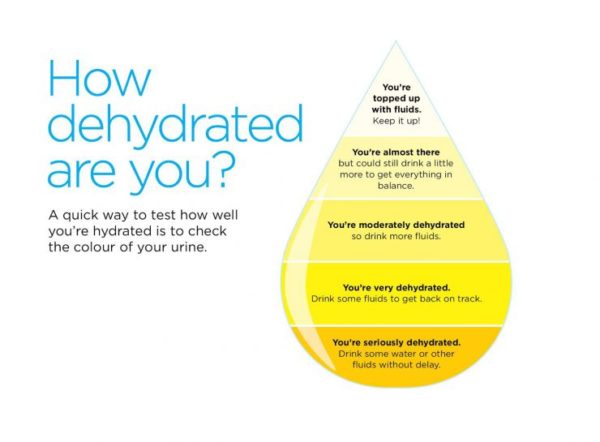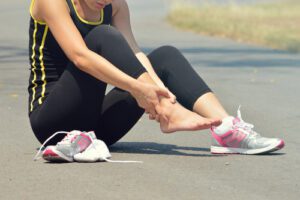The hot summer months are upon us and with them an increased risk of dehydration, heat exhaustion, and heat stroke. It is important to properly hydrate before and after any sort of outdoor activity to prevent serious complications. The good news is that there are several fun ways to hydrate your body that do not involve chugging plain water.
What is Hydration?
Our bodies are about 70% water and every single cell and organ needs water to function properly. We need to be adequately hydrated in order to:
- Regulate our internal body temperature
- Get rid of waste via sweating and urination
- Lubricate joints
- Keep energy levels up
The U.S National Academies of Sciences, Engineering, and Medicine recommends that an adult consume anywhere from 2.7 to 3.7 liters of water per day. This includes water from foods and other beverages. This is a general recommendation that can be influenced by several factors.
- Exercise – if you perform any kind of exercise that causes you to sweat, you will need to drink extra water to replenish properly.
- Environment – if you are spending an increased amount of time outside, you will also need to consume extra water. **Keep in mind that dehydration is more likely to occur at higher altitudes
- Pregnancy/breast-feeding – if you are pregnant or breast-feeding your daily hydration needs are also higher. Click here to learn more about postpartum wellness at CHARM:
Postpartum Wellness
One of the best ways to ensure that you are drinking enough water is to purchase a reusable water bottle (also good for the environment!) and set a goal for how many bottles-worth of water you will drink in a day. If you are used to only drinking a couple glasses of water a day, maybe set a goal for one entire bottle-worth at first.
As your body adapts to the increase in fluid intake you can slowly increase the amount you drink per day. Continue to keep in mind if you are exercising, spending time outside, etc. as that will influence how much more water you should be drinking. Another tip that will help you know if you are hydrated is to look at the color of your urine. It should be clear or pale yellow if you are properly hydrated.

Heat Exhaustion vs. Heat Stroke
Both heat exhaustion and heat stroke are serious, yet preventable conditions. Heat exhaustion occurs first and is characterized by heavy sweating, cold/clammy skin, dizziness, nausea/vomiting, cramps, and tiredness/weakness. This occurs after spending too much time outside without taking precautions such as staying in the shade, drinking water, etc. If you or someone around you starts to experience the symptoms of heat exhaustion you should:
- Move to a cool place, inside ideally
- Put cool, wet clothes on your body
- Drink water
If heat exhaustion is not managed appropriately and your internal body temperature increases to 103 degrees, heat stroke can occur. Heat stroke is extremely serious and medical attention should be sought. Below are some of the possible symptoms of heat stroke:
- Sudden severe headache
- Loss of consciousness (fainting)
- Racing heart rate, fast breathing
- Dry, hot skin

3 Tips for Staying Hydrated
- Eat more water-rich fruits and vegetables
- As stated earlier, our daily water needs include water that comes from fruits and vegetables. In the summer months, nature provides us with tons of in-season fruits and vegetables that have a high water content. These include: watermelon, spinach, cucumbers, strawberries, peaches, cantaloupe, lettuce, and tomatoes.
- If you are interested in seasonal eating this blog post outlines fruits and vegetables for spring: https://charmaustin.com/how-to-maximize-your-spring-season/
- Try coconut water
- Coconut water is an all-natural source of electrolytes that is extremely hydrating. It is high in potassium, magnesium, sodium, and calcium. When we sweat, we lose a significant amount of electrolytes so it is important to hydrate with beverages other than plain water to properly replenish.
- Make your own infused water
- There are tons of artificially flavored waters on the market that might taste delicious but are also filled with additives and dyes. A healthier option is to make your own! Throw a couple of strawberries and fresh basil into your reusable bottle to make your water extra hydrating and tasty. Other good flavor options are:
- Blueberry and lemon
- Cucumber and mint
- Watermelon and lime
- There are tons of artificially flavored waters on the market that might taste delicious but are also filled with additives and dyes. A healthier option is to make your own! Throw a couple of strawberries and fresh basil into your reusable bottle to make your water extra hydrating and tasty. Other good flavor options are:
Sources:
- https://www.mayoclinic.org/healthy-lifestyle/nutrition-and-healthy-eating/in-depth/water/art-20044256
- https://www.urologyhealth.org/healthy-living/lifestyle-and-exercise/ways-to-stay-hydrated-in-summer
- https://www.ccmhhealth.com/heat-exhaustion-vs-heat-stroke/
- https://www.cdc.gov/disasters/extremeheat/warning.html
- https://www.healthline.com/nutrition/8-coconut-water-benefits#TOC_TITLE_HDR_7



































